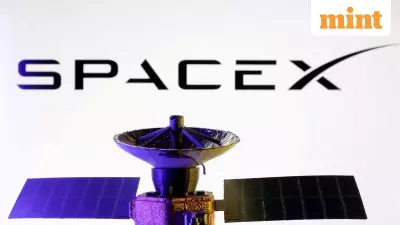
A bold startup initiative aiming to illuminate the night sky with man-made celestial bodies is facing intense scrutiny from the global scientific community, with experts warning of potentially irreversible damage to astronomical research and space operations.
The Controversial Vision: Brighter Than Natural Stars
The ambitious project involves deploying specially designed satellites equipped with highly reflective surfaces that would make them visible to the naked eye from Earth's surface. These artificial stars could potentially outshine most natural celestial objects, creating a permanent transformation of our night sky.
According to the company's vision, these orbiting reflectors would serve multiple purposes, from artistic displays to potential commercial applications. However, the scientific community remains deeply skeptical about both the feasibility and the consequences of such an undertaking.
Scientific Community Raises Alarm Bells
Leading astronomers and space researchers have expressed grave concerns about the project's potential impact. The primary worries include:
- Severe light pollution that could compromise ground-based astronomical observations
- Increased risk of satellite collisions in already crowded orbital paths
- Interference with crucial space research and deep space observations
- Potential disruption to migratory patterns of birds and other wildlife
- Long-term space debris concerns that could affect future space missions
The Growing Problem of Space Congestion
This controversial proposal comes at a time when Earth's orbit is becoming increasingly crowded. With thousands of satellites already in operation and thousands more planned by various companies and space agencies, the addition of reflective satellites specifically designed to be visible raises unprecedented concerns.
Space traffic management experts warn that such projects could exacerbate existing challenges in orbital coordination and collision avoidance. The reflective nature of these proposed satellites could also interfere with sensitive astronomical instruments that rely on detecting faint cosmic signals.
Environmental and Cultural Implications
Beyond the scientific concerns, environmental advocates highlight potential ecological consequences. Many species, particularly nocturnal animals and migratory birds, rely on natural celestial navigation. The introduction of artificial bright objects in the night sky could disrupt these ancient biological patterns.
Cultural heritage organizations have also voiced concerns, noting that the night sky has profound significance across human cultures and civilizations. Transforming this shared heritage could have unforeseen social and cultural impacts.
The Regulatory Challenge
The project highlights significant gaps in current space regulation frameworks. While existing treaties govern space activities, the specific case of intentionally modifying the appearance of the night sky presents novel legal and ethical questions that current regulations may not adequately address.
International space law experts emphasize the need for comprehensive assessment and potential new regulatory frameworks to address such ambitious commercial space ventures.
As the debate continues, the scientific community urges careful consideration of all potential consequences before any such project moves forward, emphasizing that the night sky represents a precious scientific and cultural resource that belongs to all humanity.





